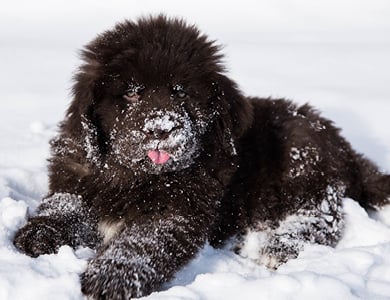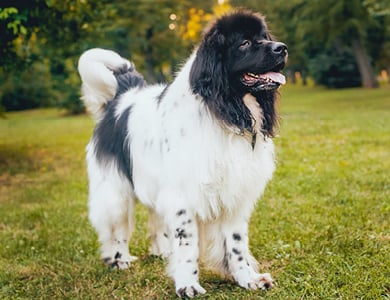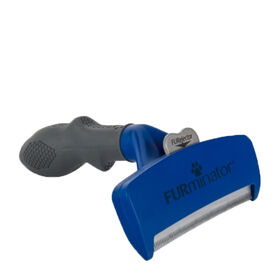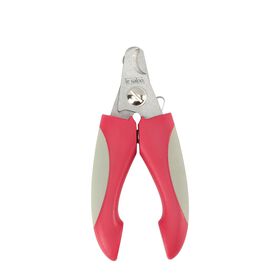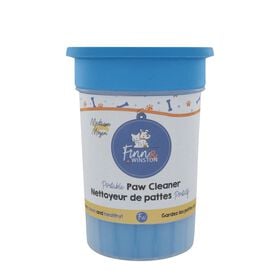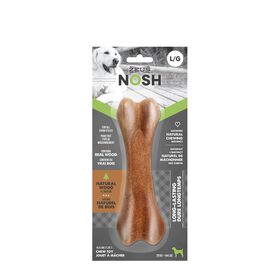The Newfoundland is one of the four purebred dogs recognized as being of Canadian origin (along with the Canadian Eskimo dog, Labrador retriever and Nova Scotia duck tolling retriever). The Newfoundland, sometimes referred to as “the gentle giant,” is a powerful, hard-working and affectionate breed. If hair and drool don’t turn you off, this breed will definitely win you and your family over.
Origins
The origins of this dog will always remain a matter of speculation. There are several theories to explain the appearance of the large black dog in Newfoundland, where the name of the breed comes from. The Newfoundland Dog Club of Canada specifies that its ancestors were brought over by the Vikings around 1000 BC. With the advent of European fishermen, a variety of new breeds helped shape and reinvigorate the breed, but the dog’s essential characteristics remained. In fact, the breed’s distinct physical and mental attributes had been established by the time colonization was permitted in 1610.
Regardless of the dog’s exact origins, English settlers on the island of Newfoundland were impressed with its big size, strength, natural swimming ability and gentle disposition. Merchants brought the dogs back to England, where they were bred with large estate dogs. The breed was given its name around 1775. At first, the breed evolved by natural selection and later, by human selection. Newfoundlands were used as draft dogs and ship dogs. Few ships in the 18th and 19th centuries set sail without a Newfoundland on board. Despite their popularity among sailors and in breeding kennels in England in the late 1800s, the breed almost went extinct in its native land (Canada) as a result of a law passed in 1780 forbidding the ownership of more than one dog. Thanks to the efforts of the Honourable Harold MacPherson (Westerland Kennels), the breed survived. The Newfoundland is the official animal symbol of the province with the same name. Canada officially became the breed’s country of origin in 1949, when the territories of Newfoundland and Labrador joined Confederation.
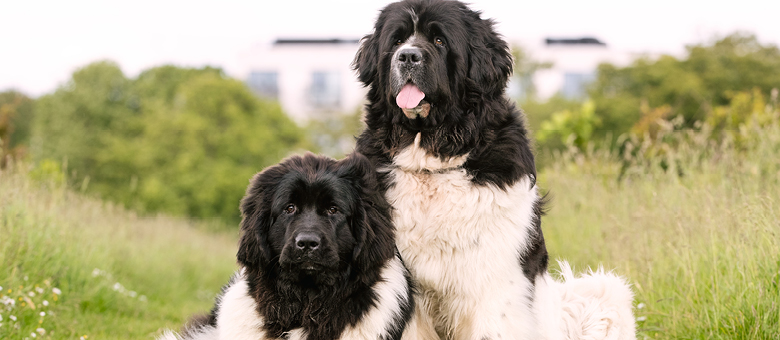
Physical appearance
The Newfoundland is a massive, muscular and versatile dog that is dignified and has a proud head carriage and a visually square appearance. The female’s body can be slightly longer and less massive than the male’s. A mature dog should never appear leggy or lack substance. Large size is desirable, but never at the expense of gait, symmetry and balance. The webbed feet allow them to navigate through the water with ease and do their work. The average height of the male at the withers is 71 cm (28 in.). The average height of the female is 66 cm (26 in.). The average weight of adult males is 68 kg (150 lb), and that of adult females is 54 kg (120 lb).
Newfoundlands have a waterproof double coat. The outer coat is of medium length and straight. Although not curly, it can be slightly wavy. The undercoat is soft and dense. The only colours accepted in Canada are black, and black and white. The black and white variant is also known as a landseer. This dog has a massive head and large skull, and a moderately long, square muzzle with well-developed nostrils. However, the lips should not be too full. The deep-set, dark brown eyes are relatively small, and the conjunctiva should not show.
Life expectancy and health
The Newfoundland’s average life expectancy is 8 to 10 years. It may be prone to health problems such as gastric torsion (dog bloat), subaortic stenosis (heart disease), hip and elbow dysplasia, von Willebrand disease (bleeding disorder), cataracts, and entropion and ectropion (anomalies of the eyelids). Like a high percentage of large breed dogs, the Newfoundland is also predisposed to knee cruciate ligament tears. It is therefore important to choose a conscientious breeder who will do appropriate health tests, and to visit your veterinarian regularly throughout the dog’s life. Lastly, it’s important to know that Newfoundlands have trouble tolerating heat.
Energy level and temperament
Although its relaxed appearance can give the impression that the breed is lazy, the Newfoundland has a great deal of energy to expend. Regular walks and play time in the park or in a big yard will keep your dog fit and happy. Although these large dogs have big appetites, it’s important not to overfeed them because they can easily become overweight, putting stress on their joints and organs, and decreasing their life expectancy. Since Newfoundlands love the water, summer aquatic activities are ideal. Keep in mind that, even in cold weather, this breed can benefit from a quick swim, since working in cold water was originally an integral part of the Newfoundland’s work mandate.
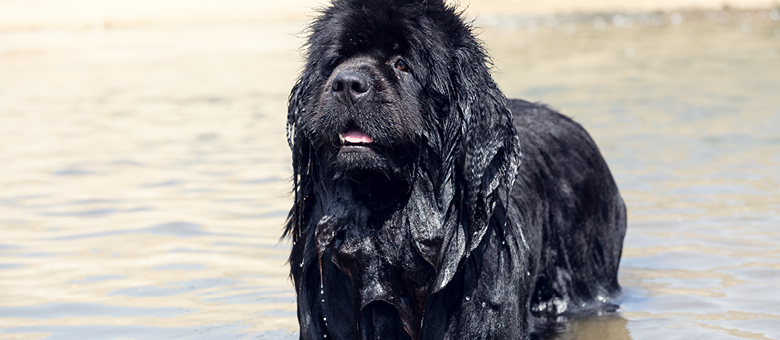
This dog’s gentle and intelligent expression reflects its kindness and friendliness towards humans. It is considered one of the most intelligent dog breeds. It is easy to train, loyal, patient and protective of its owners, making it an ideal pet for families with children.
Maintenance
The Newfoundland’s double coat can be trimmed for comfort and to give it a groomed look. It should be brushed every day to control shedding and prevent the formation of knots. An occasional bath may be necessary and will help remove dead hair during peak shedding season in the summer. As with all breeds, the nails must be trimmed regularly to prevent foot problems. Newfoundlands drool more than most other breeds. Some people will opt for a bib, like a baby’s, to prevent the chest hair from becoming messy.
For more information, contact a registered breeder at the Canadian Kennel Club, who can answer all your questions. You can also contact the organization for more information on breeders and various breed clubs in Quebec and elsewhere in Canada.


